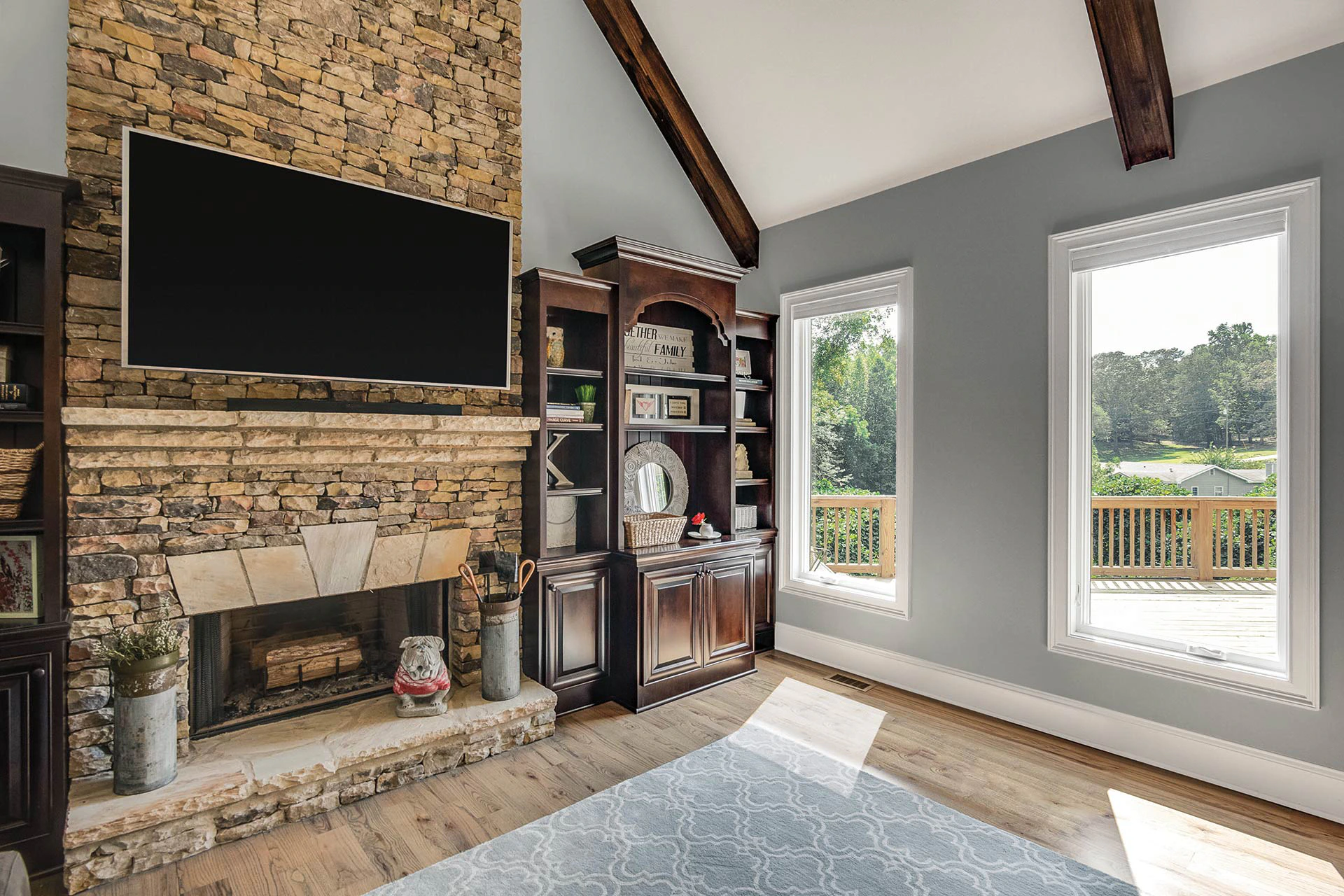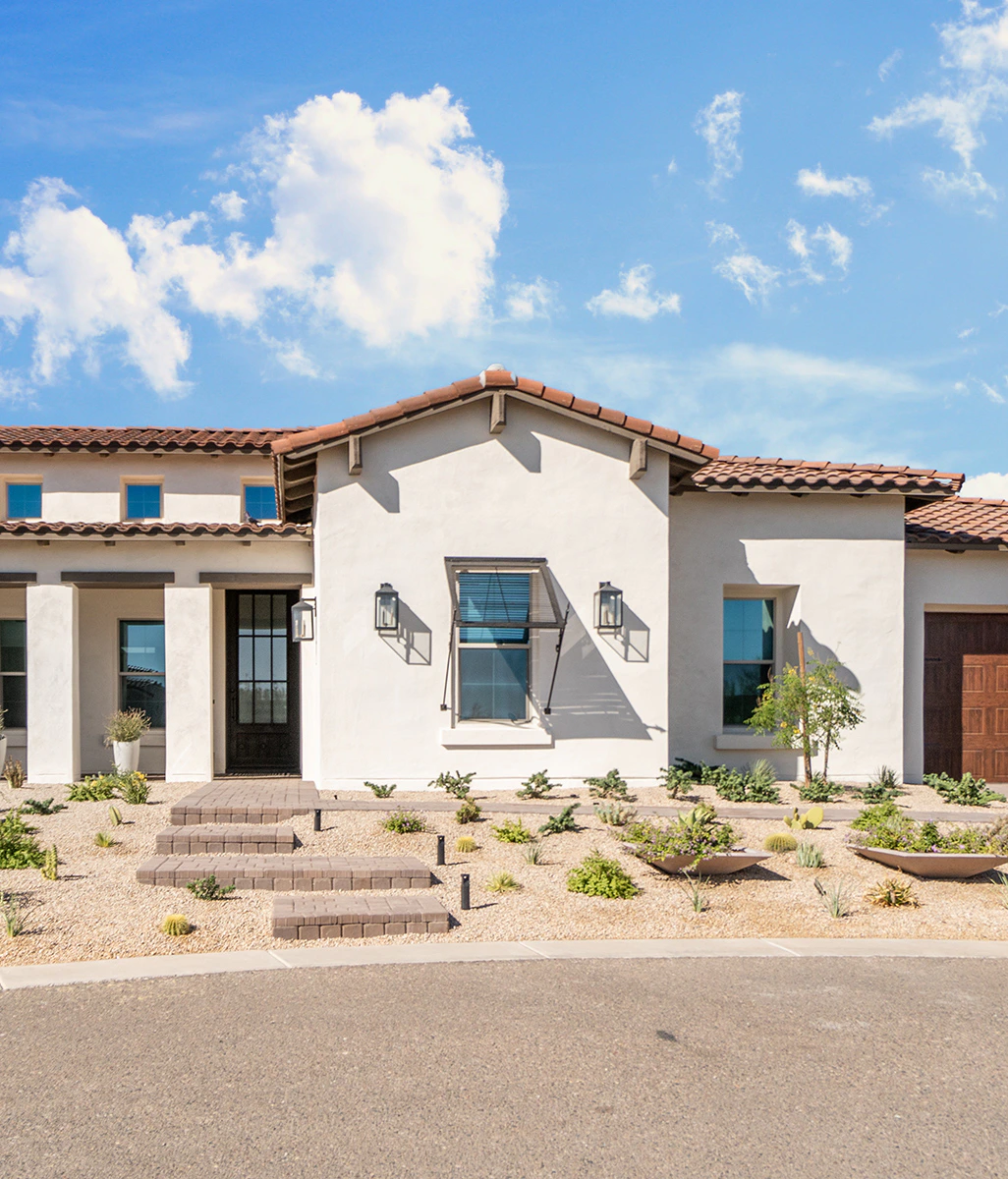A Brief History of Home Windows: Evolution and Making
What is a home without windows? They let us watch the comings and goings of the outside world and allow light and fresh air to flow into our living spaces. But beyond their practical use, the history of home windows reveals a fascinating evolution that mirrors human innovation and architectural progress. From simple unglazed openings to the cutting-edge modern window technology of today, we'll explore the history of home windows, delving into their ancient origins, significant advancements, and how window glass is made in the modern era.
Looking for modern windows that will stand the test of time? Choose the local window contractor you can count on.

The Origins of Home Windows
The story of home windows begins with the earliest human dwellings, where the need for light and air prompted simple but effective solutions. In ancient times, windows were nothing more than open holes in walls or roofs, allowing sunlight to filter into dark interiors. These early home windows were rudimentary but served their purpose, marking the first step in the evolution of windows.
Early Innovations in Window Design
As civilizations advanced, so did the design and functionality of windows. Early innovations in window design reveal that humans cleverly adapted their environments in search of not just protection, but also comfort.
Unveiling the First Windows
The first concept of windows was, naturally, quite straightforward. Early homes featured unglazed openings, often in roofs, to let in light and air and let out smoke from cooking and heating fires. As you can imagine, these openings offered little protection from the elements. Over time, people began to cover them with movable materials such as animal hide, cloth, or wood. These coverings provided a barrier against weather conditions while still allowing some light to enter when desired.
Advancements in Ancient Civilizations
As human civilization began to take shape, architecture and window design took significant leaps forward. Despite glass existing since the Stone Age, the Romans were among the first to use glass for windows, though the glass was cloudy and offered limited visibility — mostly, windows were used to keep the elements at bay. Nevertheless, Roman glass windows, thought to appear around 100 AD, represented a major advancement in window technology.
Meanwhile, in the Far East, a different approach was taken. In ancient China, Korea, and Japan, sliding paper windows became the norm. These windows, made from rice paper stretched over wooden frames, diffused light beautifully and provided privacy while having highly-movable functionality, connecting the interior to the outside world.
The Middle Ages: From Mullioned Windows to Glass Panes
The Middle Ages saw a loss of much knowledge in the Western world from the preceding Roman Empire, and architects were pushed to evolve their styles and design principles in response to cultural shifts. This period saw the introduction of mullioned windows and the eventual transition to glass panes.
Mullioned Windows in Europe
During the early Middle Ages, mullioned windows became common in European architecture, especially among the nobility. These windows featured vertical bars or "mullions" that divided the window into sections, often filled with small glass panes or animal horn sheets. In England, for example, windows made from flattened animal horns were used in some homes during the early 14th century.
Transition to Transparent Glass
Transparent glass was invented by Venetian glass blower Angelo Barovier in the 15th century — though it was costly to create in large quantities. By the early 17th century, the material became more widely available thanks to advancements in glassmaking techniques such as the cylinder glass method. This method involved blowing a cylinder of glass, cutting it open, and flattening it into a sheet. As a result, glass windows became more affordable and started appearing in ordinary homes across England and Europe.
Windows in the Industrial Age
The Industrial Revolution brought about a dramatic transformation in window production. With the advent of new materials and manufacturing processes, windows became larger, clearer, and more accessible to the general population.
Plate Glass
One of the most significant advancements during the Industrial Age was the development of plate glass making processes, where molten glass was poured onto a flat surface, then rolled and polished.This allowed for the production of large glass panes, enabling the creation of floor-to-ceiling windows that became a hallmark of both modern architecture and the factory-style buildings of the day. Transparent plastics also began to be used in some window-making processes, providing new options for durability and design.
Modern Window Manufacturing & Technology
Today, the process of making window glass is a sophisticated and highly technical operation. Modern home windows are crafted with precision, combining traditional materials with cutting-edge techniques to produce glass that’s clear, durable, and energy-efficient.
How Is Window Glass Made?
The manufacturing of window glass begins with a combination of materials, including sand, soda ash, dolomite, limestone, and salt cake. These ingredients are heated in a furnace to an incredible 1500 degrees Celsius (2732 degrees Fahrenheit), where they melt into a molten state. The liquified glass is then poured into a bath of molten tin, a process known as the "float glass" method, which allows the glass to spread out and form perfectly flat sheets.
Once the glass sheets are formed, they are cooled and tempered. In some cases, the glass is reheated slowly to relieve internal stresses, while in others, it’s tempered with blasts of cold air to increase strength and safety. The result is the modern window glass we see in homes today.
The Evolution of Window Technology
Modern window advancements aren’t limited to the glass manufacturing process. One of the most significant developments in recent years is the creation of insulated window glazes. These glazes consist of multiple layers of glass separated by a layer of gas, which acts as insulation. This technology helps to reduce heat loss in winter and heat gain in summer, making homes more energy-efficient.
Heat-absorbing tints and various other functional coatings are also often applied to modern windows, further enhancing their ability to control temperature and light. These features are now standard in most modern home windows, and show how far we’ve come from unglazed openings in primitive dwellings.
Windows: From Antiquity to Modern Marvels
Windows have gone from mere functional openings to architectural statements that not only protect but also connect us to the world and allow light, warmth, and inspiration to enter our homes. From simple holes in the wall to today’s cutting-edge designs, the evolution of windows reflects humanity’s journey of creativity and ingenuity throughout our development as a species. Human endeavor is all about continually striving for progress — and one of the reasons we do this is so we can design better, more beautiful spaces in which to live and raise our families.
Ready to make your living space more beautiful? The experts at Lifetime Home Remodeling can help. We’re passionate about window innovations and exceptional customer experiences, and you can trust we’ll get the job done right. To learn more about how you can transform your home into a breathtaking sanctuary of light and innovation, contact us today.
Our teams of experts are here to help
Contact UsDoor Expert
Expert
Expert
Expert




